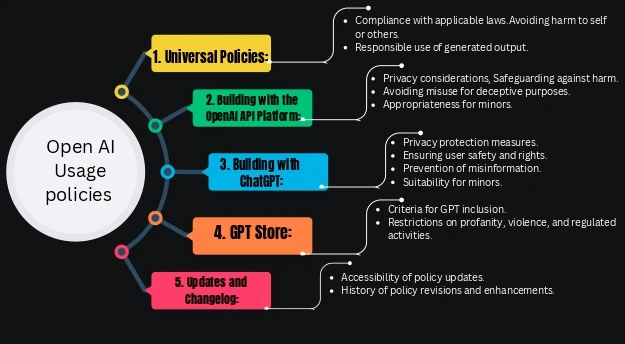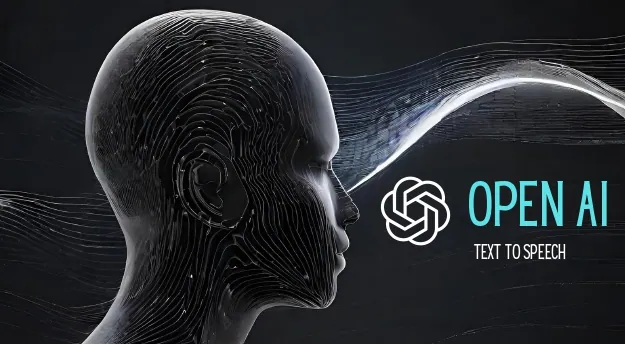OpenAI has been using its text-to-speech model for a long time (since 2022), and they have even provided an API for it.
They have previously integrated a top-notch text-to-speech model into their chatbot (Chat GPT).
But recently they announced their new voice-cloning model called “voice engine,” which gained lots of media and public appreciation with a little bit of concern.
So let’s check out the capabilities, release date, concerns, and voice output examples of this model.
1. What is Open AI’s new voice-cloning tool?

As I said at the beginning, this model is called a “Voice Engine,” which takes 15-second voice input and text input to generate a natural-sounding voice that can match the provided 15-second voice.
A. Capability of a voice engine:
The full capability of this model is still undisclosed, but based on my research from several blog posts and YouTube videos, I found out this:.
- It can clone your voice by taking 15-second inputs.
- It can translate your voice into any known language in the world. (The company called “HeyGen” is using open AI’s “voice engine” to translate videos.)
- It can be easily trained on local, nonpopular languages, and it can provide better output than other tools.
So these are the capabilities that I found during my research. Also, I have compiled all the OpenAI new voice cloning model outputs and translated model outputs so that you don’t need to go anywhere else.
You can watch this video here.
B. Outputs of the Voice Engine:
Video-
Currently, there are 25 audio examples provided by the open AI team, but out of them, some are:
- 15-second human voice, which is used for reference audio
- Some are generated by the voice engine in different topics (topics: biology, story, chemistry, math, physics).
- Some are translated audio generated by the voice engine in different languages (Spanish, Mandarin, German, French, and Japanese).
- Also, there is some audio of voice-related patients who get their voice back with the help of this tool.
C. Benefits of Voice Engine:
- Helping Patients: If you read an open AI blog post regarding this, you will find some patients, for example, who can pronounce words more clearly, and some of them can talk properly. And this is just the beginning; the possibilities are endless in the medical field.
- Removing Language Barrier: I can tell from my personal experience that OpenAI’s audio-translating model is better than any other existing models. It can be used for real-time voice transactions, movie and YouTube video dubbing, and many more things.
- Personal assistant: Currently, there are some home or personal assistants like Siri and Alexa, but these are not the best at their work. With the help of an open AI voice engine, any company or person can make a personalized voice assistant.
These are my views. You can tell me what your views are in the comment section.
D. Concerns of Voice Engine:
There are two types of people in the world; one can use technologies to improve our society, and the other can use them to destroy it, so there are concerns like…
- Fake news: Elections are coming in many countries, and this voice-cloning model can generate realistic voices that can eventually manipulate people.
- Security concerns: This tool can be used to manipulate many voice authentication devices.
- Online harassment: Scammers have been using voice cloning for a while, but with this tool, they can now demand ransom.
Although open AI is taking big steps to control this, with its several policies and conditions
2. What is OpenAI doing to control the misuse of this model?

OpenAI is taking several steps to control this, so I read the whole usage policy for you, and out of them, I only mentioned the importance once.
- They partnered with HeyGen and many other companies to test this technology before releasing it to the public.
- OpenAI is embedding a watermark in every voice sample to trace its origin, preventing misuse. Although the watermarking technology is not ready yet.
- Educating the public about this voice-cloning technology.
- OpenAI is also exploring potential policies to protect individuals from unauthorized use of their voices in voice cloning.
So these are a few important things that I found…
3. When did Open AI release this model?
OpenAI is currently in the process of developing and testing this model. As of now, the model is only available for a select few OpenAI partners.
Once testing is complete, the model will likely be released for public use and other enterprises.
4. Conclusion on the Open AI New Voice Cloning Tool
Nowadays, OpenAI is taking big steps in this AI world, and they are constantly creating some of the best cutting-edge technologies that can change the world.
After Chat GPT, DALL.E. has now developed a new text-to-speech model called “Voice Engine.” This could be a revolutionary product for people with voice disorders.
So let’s hope the best for the future.
Lastly, that’s for visiting our site. Comment with your thoughts on this.
Have a nice day.
FaQ
Q: Can I use the Voice Engine for free?
It is not clear whether Voice Engine is available for free or not. You can visit the OpenAI website for more information.
Q: Is Voice Engine the best text-to-speech model?
It is not fully released yet, so it is difficult to say whether it is the best or not, as there are many text-to-speech models available. However, Voice Engine has some unique capabilities that make it stand out.
Q: Who are the open AI partners in the voice engine project?
They are testing this tool in multiple sectors with multiple partners, and those are Age of Learning, Heygen, Dimagi, Livox, and Lifespan.

